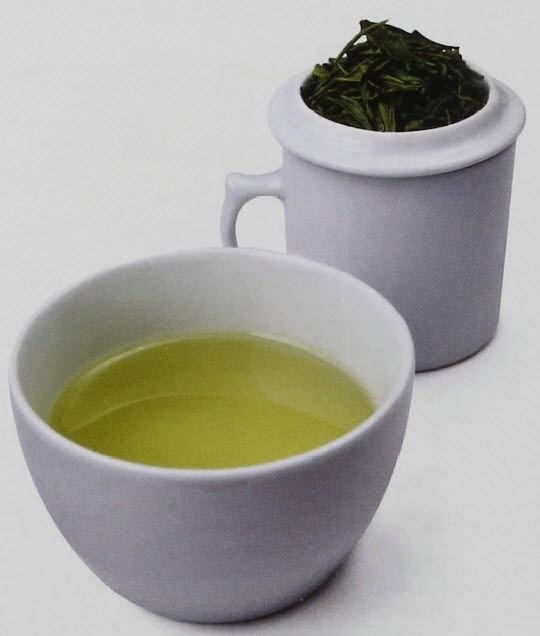Table of Contents
Learn More about Enshi Yulu Tea
Enshi Yulu Tea Introduction
Enshi Yulu is a famous historical tea. It is the only needle-shaped green tea preserved in my country that is steam-killed. It is named “Yulu” because of its emerald green leaves and silvery white jade-like hairs. It is also called “pine needles” because of its tight, round, straight, smooth leaves and sharp hairs like needles.
Enshi Yulu Tea History
Enshi Yu Lu was created in the early Qing Dynasty. In 2006, it was rated as one of the “Top Ten Famous Teas in Hubei Province” by the Hubei Provincial Department of Agriculture and was successfully declared a national geographical indication product. In July 2008, it was recognized as the “No. 1 Historical Famous Tea in Hubei”.
Enshi Yulu Tea Origin
Wufeng Mountain and Bajiao Dongzu Township in the eastern suburbs of Enshi City, Enshi Tujia and Miao Autonomous Prefecture, Hubei Province
Enshi Yulu Tea Production Process
High-grade Gyokuro tea uses fresh leaves with one bud and one leaf, uniform age, uniform size, short nodes and dense leaves, long buds and small leaves, and dark green color; ordinary Gyokuro tea uses fresh leaves with one bud and two leaves just beginning to unfold. After the fresh leaves are picked, they are made through several processes such as steaming, cooling, frying with the first hair fire, rolling, frying with the second hair fire, shaping and polishing, baking, and picking. Shaping and polishing are the key processes for making the appearance of Gyokuro tea fine, tight, straight, smooth, and emerald green. This process is divided into two stages. The first stage is to rub the tea leaves with hanging hands. Put the tea leaves on the high-temperature roasting plate, hold the tea leaves in the air with the palms facing each other, thumbs facing up, four fingers slightly bent, hold the tea leaves in the air, rub them in one direction with the right hand forward and the left hand backward, and keep throwing the tea balls to make the tea leaves slender and round, with a glossy green color. When it is about 70% dry, it will enter the second stage – rubbing the tea leaves on the furnace plate. In this stage, the four techniques of “holding, rubbing, holding, and tying” are used alternately, and shaping and polishing are continued until the dryness is moderate. Its production process and tools are very ancient. In April 2011, the handmade “Enshi Yulu” was included in the third batch of intangible cultural heritage protection list of Hubei Province.
Enshi Yulu Tea Purchase Guide
Enshi Yulu finished tea is divided into special grade and grades one to five.
Enshi Yulu Tea Quality Identification
◎ The tea sticks made from Enshi Jade Dew are tight and thin, bright green in color, uniform and straight, and shaped like pine needles. Its appearance is pleasing to the eye. ◎ After brewing with boiling water, the soup will be green and bright in color, like jade or dew, with fresh aroma and sweet taste. ◎ Enshi Yulu tea has the remarkable characteristics of “three greens”: tea green, soup green, and leaf bottom green.
Enshi Yulu Tea Brewing Method
Enshi Jade Dew Tea should be brewed in a glass cup, and the water temperature should be 70 to 80°C (the best Jade Dew Tea can also be brewed with cold water). If brewed with boiling water, the Jade Dew tea will easily become overcooked and the tea soup will be turbid and the aroma will be dull. When brewing, warm the cup first, then add tea, then add a little water to soak the tea leaves, and then add more water to brew. You will see the buds and leaves in the cup spread out like life and fall like jade. You can drink it after 1 to 2 minutes.
Related Products of Enshi Yulu Tea
Compressed Tea
Zhangping Shuixian Tea
Zhangping Narcissus is a famous historical tea, also known as “paper-wrapped tea”, with a history of sixty to seventy years. In 1995, Zhangping Narcissus won the gold medal at the Second China Agricultural Expo and was included in the “Chinese Famous Tea List”.
Compressed Tea
Gold Brick Tea
Golden Brick is a newly created famous tea and one of the new products in the Junshan Yellow Tea series. It is named because of its brick-like appearance and the characteristics of yellow leaves and yellow tea. The launch of Golden Brick not only enhances the influence of Junshan Yellow Tea, but also expands the development space of yellow tea.
Compressed Tea
Orange Puer Tea
Orange Pu’er tea is a special type of compressed tea made from tangerine peel and Pu’er tea. It has the mellow taste of Pu’er tea and the sweet and fresh fragrance of tangerine peel. Aged orange Pu’er tea has the effects of warming the stomach, drying dampness and removing phlegm, and reducing weight and reducing blood lipids.
Fruity Tea
Lychee Black Tea
Lychee black tea is a newly created famous tea, created by Guangdong Tea Import and Export Company in the 1950s. Its appearance is similar to that of high-quality bar black tea, but it is mixed with lychee juice, giving it a unique lychee flavor.


